Are you looking for a homeopathic cure for epilepsy? This article discusses the homeopathy treatment of epilepsy along with the best homeopathic medicine for epilepsy treatment.
What is Epilepsy?
The term ‘epilepsy’ comes from a Greek word meaning ‘to take hold of‘ hence the use of term ‘seizure‘ to describe its effects. Epilepsy may also be looked upon as a tendency to have repeated seizures. The seizures are an outward, visible sign that a part of the brain is not working as it should. Its activity of transmitting and receiving electrical and chemical messages becomes disrupted.
Epilepsy is a disorder in which nerve cells of the brain from time to time release abnormal electrical impulses. These cause a temporary malfunction of the other nerve cells of the brain, resulting in alteration of, or complete loss of consciousness.
The International League Against Epilepsy (ILAE) has proposed definition for epilepsy. An epileptic seizure be defined in principle as “a transient occurrence of signs and/or symptoms due to abnormal excessive or synchronous neuronal activity in the brain”
There are several forms of epilepsy. Most people will have seen someone suffer a major epileptic seizure, suddenly losing consciousness, jerking the arms and legs, etc. But there are other types of epilepsy – for example, one common form of epilepsy in children merely consists of staring blankly and losing contact with the surroundings for a few seconds.
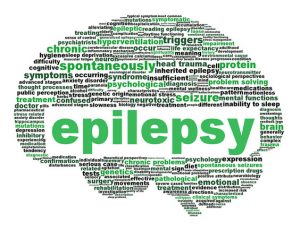
A seizure can start by affecting one part of the brain and then spreading to another part or can even go on to affect the whole brain. This is why people can experience different types of seizure, lasting from a few seconds to several minutes.
Having epilepsy does not mean you are mentally ill or automatically have difficulties in learning, or have to take medicines for the rest of your life. Nor does it mean that if epilepsy happens in childhood it will stay with the child into adulthood. A substantial number of children grow out of their seizures as they enter adulthood; others may not encounter epilepsy until adolescence.
Having epilepsy does not necessarily mean the child cannot live the way his or her friends live, or share in the same activities. Support arrangements may be needed in order for this to happen.
While living with epilepsy is not easy, the affected children and their parents should be actively encouraged to develop a positive attitude to the condition— looking at what it enables them to participate in and taking control of it, rather than viewing it as an illness or disabling condition that will blight the rest of their lives.
Parents often ask why their child has epilepsy and seem surprised when the doctor cannot given them a definite answer. This is because despite having carried out a range of diagnostic tests, which may include blood tests and brain scans of various kinds, taken a careful case history and looked at the electrical activity in the child’s brain with an EEG (electroencephalogram), doctors are unable to find the cause in upto 75% of patients. Children with this type of epilepsy are often described as having idiopathic epilepsy, where the cause is not known.
Homeopathic Remedies & Homeopathy Treatment for Epilepsy
Why Homeopathy?
- There is no known side effects for homeopathy medicines for epilepsy.
- you not need to take medicines for life long
Homeopathy treats the person as a whole. It means that h homeopathic medicine for epilepsy focuses on the patient as a person, 
- Calcarea carbonica
- Bufo rana
- Cuprum Metallicum
- OEnanthe crocata
- Artemisia vulgaris
- Kali bromatum
- Silicea
- Nux vomica
- Plumbum
- Cicuta virosa
- Sulphur
- Hyoscyamus
- Belladonna
- Causticum
Calcarea carbonica
- The treatment of epilepsy should be directed to the underlying dyscrasia, as this is at fault in most, if not all, cases.
- Calcarea carbonica, with its rickety, tuberculous, scrofulous and flabby symptoms, its characteristic deficiency of lime assimilation, as shown in children by the open fontanelles and backward dentition, will frequently be the remedy with which to commence the treatment.
- The characteristic relaxation on falling asleep and the sweating of the head and neck are fine indications for its use. It has an excellent clinical record.
- A epileptic suffering continually from the dread of an attack will withdraw himself as much as possible from the outside world, brood over his affliction and become melancholic,and there is no other remedy so well adapted to this condition as Calcarea.
- Its anxiety, palpitation, apprehensive mood despondency, fretfulness and irritability, its weakness of memory, its loss of consciousness, its vertigo and convulsions are prominent and characteristic indications for its use in epilepsy.
- If epilepsy be caused by fright, suppression of some long standing eruption, onanism or venereal excess it will probably be one of the remedies to use in the course of the treatment.
Cuprum Metallicum
- Cuprum is a very deep-acting remedy, its well-known power of producing convulsions and spasms and its excellent clinical record make it a valuable remedy in epilepsy.
- We know positively that poisonous doses of Cuprum cause epileptic symptoms,and it is among the most curative remedies for epilepsy in child life.
- The convulsions start form the brain, though the aura, which is one of long duration,seems to center in the epigastrium.
- Owing to this long duration of the aura consciousness is not immediately lost, and the patient will often notice the contractions in the fingers and toes before they become unconscious.
- The face and lips are very blue, the eyeballs are rotated, there is frothing at the mouth and violent contractions of the flexors.
- The attacks is usually ushered in by a shrill cry and the cases are most violent and continued. It is also a remedy for nocturnal epilepsy when the fits occur at regular intervals, such as the menstrual periods.
- Epileptiform spasms during dentition or from retrocessed exanthema may indicate Cuprum. Dr. Halbert remarks that Cuprum will stop the frequency of the attacks more satisfactorily than any other remedy, it is his sheet anchor in old and obstinate cases.
OEnanthe crocata
Perhaps no remedy in the materia medica more closely pictures epilepsy than OEnanthe. The reliable and practical symptoms calling for its use may be summed up as follows: Sudden and complete loss of consciousness; swollen livid face; frothing at the mouth; dilated or irregular pupils; convulsions with locked jaws and cold exremities.
Dr. S. H. Talcott, of the Middletown State Hospital, summed up his experience with the remedy as follows:
- The fits decrease in number 40 to 50 per cent.
- The convulsion are less severe than formerly.
- There is less maniacal excitement before the fits.
- Less sleeplessness, stupor and apathy after the fits and the debilitating effects of the attacks are more quickly recovered from.
- The patients treated with OEnanthe are less irritable, less suspicious and less fault finding.
- The patients are more easily cared for.
Artemisia vulgaris
- Artemisia vulgaris is another remedy which has been successfully used for epilepsy from fright or some mental emotion, where the attacks occur in rapid succession, and also in petit mal, where the patient is unconscious only for a few seconds and then resumes his occupation as if nothing had happened.
- Artemisia absinthium indicated in seizures preceded by vertigo, a warm sensation rising from the stomach, and by a slight impairment of speech.
Agaricus muscaris
- In epilepsy when after the attack there is great flow of ideas and the patient talks too much. Fit of epilepsy every seven days.
Kali bromatum
- This remedy should have no place in the homoeopathic treatment of epilepsy; it is given here because it is the principal drug employed by the allopathic school, and because nearly all cases coming to us for treatment from old school hands are liable to be complicated by a previous treatment with the bromides, notable the Bromide of Potash.
- It is not a curative remedy, but a palliative one; it strikes at the attack and not the disease. It will often modify the attacks, and used as a prophylactic may avert the seizure, but its prolonged use works inevitable harm.
- It weakens the mental faculties and hastens imbecility. It is indicated by all the characteristic of epilepsy and hence is a safer prophylactic than the Bromide of potash. Bromide acne is often present in cases coming to us from old school hands.
Silicea
- Silicea is one of our most valuable remedies in epilepsy. It suits especially scrofulous and rickety subjects. The aura starts from the solar plexus , as in Bufo and Nux vomica.
- Certain phases of the moon are said to affect the attacks, which are brought on by an overstrain of the mind or emotions. Nocturnal epilepsy, feeling of coldness before an attacks is also characteristic of the drug, and the fit is followed by warm perspiration.
- When Silicea is required there is an exalted susceptibility of the upper spinal cord and the medulla and an exhausted condition of the nerves.
- The attacks occur about the time of the new moon. It comes in after Calcarea in inveterate chronic cases, and coldness of the left side of the body preceding the attack is very characteristic.
Nux vomica
- The characterizing feature of epilepsy is loss of consciousness, therefore, Nux vomica is not often a remedy in the idiopathic form.
- It suits cases arising from an excess of the reflex action caused, for instance,by indigestion. The aura in a case calling for Nux starts in the solar plexus, and among the most characteristic symptoms is a sensation of ants crawling over the face.
- The middle and higher potencies will be found more useful in the spinal form of epilepsy, and this is the form most suitable to Nux.
Plumbum
- Plumbum has caused epilepsy, and we may use it for these symptoms: the attack is preceded by a heaviness of the legs and is followed by paralysis; epileptic seizures from sclerosis, or from tumors of the brain, consciousness returning slowly after an attack is another indication and it is more suitable to the chronic forms of the disease.
- Constipation and abdominal pains further indicate.
Cicuta virosa
- The indications for cicuta are sudden rigidity followed by jerks and violent distortions, and these followed by
utter prostration.
- The prostration is characteristic, being equaled only by that of Chininum arsenicosum. There is a tonic spasm renewed by touch simulating Strychnia; but in Cicuta there is loss of consciousness , thus resembling more the epileptiform.
- There is great oppression of breathing, lockjaw, face dark red, frothing at the mouth and opisthotonos.
- The reflex excitability under Cicuta is much less than under Strychnia. Another characteristic of Cicuta is fixed staring eyes; others are trembling before and after the spasm and strange feeling in the head preceding the attack.
- Bayes, however, regards muscular convulsions as a specially prominent symptom for Cuprum.
Sulphur
- Like Calcarea, Sulphur is a constitutional or basic remedy, and it will act well where there is a scrofulous taint.
- It is useful for the same class of cases as is Calcarea; namely, those brought on by sexual excesses or the suppression of some eruption.
- The convulsions are attended with great exhaustion and it is suitable to the chronic form of epilepsy in children who are typical Sulphur patients.
- There is perhaps a tendency to fall to the left side. Sulphur is also a useful intercurrent remedy in the course of the treatment of an epilepsy.
- Psorinum may also be needed as an intercurrent.
Hyoscyamus
- In epileptic convulsions Hyoscyamus is a most valuable remedy.
- There is much twitching and jerking and hunger previous to the attack, there is frothing at the mouth and biting of the tongue.
- A violent fright will produce an attack that will call for Hyoscyamus.
- The convulsions seem to have more of a hysterical nature, and there are illusions of sight and hearing.
Belladonna
- Homeopathic medicine for epilepsy Belladonna is especially a remedy for acute epilepsies, when the cerebral symptoms are prominent, where the face is flushed and the whole trouble seems to picture cerebral irritation, and more especially if the patient be young.
- There is an aura as if a mouse were running over an extremity, or of heat rising from the stomach. There are illusions of sight and hearing, and the convulsions are apt to commence in an upper extremity and extend to the mouth, face and eyes.
- The great irritability of the nervous system, the easily disturbed sleep, the startings, the tremors and twitching and the general Belladonna symptoms will render the choice easy.
- Atropine,the alkaloid of Belladonna, has also been used successfully in the treatment of epilepsy.
Causticum
- Homeopathic medicine for epilepsy causticum is useful in Petit mal, also when the patient falls while walking in the open air, but soon recovers. It is said to be useful when the attacks occur at new moon.
- It menstrual epilepsy and that occurring at puberty Causticum is the remedy. Kafka recommends Hepar in nocturnal epilepsy. Causticum is perhaps better suited to recent and light cases.
- Another preparation of potash, Kali muriaticum, is a most useful remedy in epilepsy; it has an affinity for the nerve centers and it is a slow acting remedy.
Passiflora inc –
- Excellent remedy for epilepsy treatment, attacks coming on the menstrual period. The aura is a tight feeling in the chest.
Belladonna –
- In recent cases of epilepsy only; the convulsions begin in the upper extremities and extend to the face, eyes and mouth; fits of short duration several times during the day and passing off suddenly.
Argentum nitricum
- Epilepsy caused by fright or at the time of menses. Dilatation of pupils for days or hours before the attack and restlessness and trembling of hands after the attack. Sharp cry.
- Violent muscular twitching, especially of the throat; complete unconsciousness with frothing at mouth; often bites her tongue, then a deep sleep for about three hours.
- Fit comes by taking sweet fruits. Epilepsy in persons suffering from indigestion, loud belching during the attack or before it; the patient is withered and dried in constitution.
Natrum mur
- Twitching of arms and legs before and during the attack; aversion to bread.
- Dullness, difficulty of thinking, depression and irritability; Aura begins in the arms or may be as if mouse ran up the leg to right side of abdomen.
- Attacks preceded by vertigo, sleep, gritting of teeth, nausea and vomiting, froth at mouth.
- Trembling; Body jerks, legs rapidly drawn up, hands clinched, thumbs not drawn in. chronic cases of psoric taint, suppressed itch.
Natrum sulph
- Epilepsy from concussions of brain, after injuries on head, great irritability and disgust of life, great exhaustion and prostration.
Melilotus – Epilepsy from the blow on head.
Helleborus
- Epilepsy in infants; during the paroxysm , the child remains sensible and the paroxysm may occur several times during the same day and after the attack, the child goes to sleep; bad effects from earlier head injuries.
Bufo
- In cases of epilepsy when due to masturbation or sexual excesses; The fit may return during coition.
- An awful sensation of anxiety in the abdomen and then there is sudden loss of consciousness. Pupils largely dilated and unaffected by light before the attack.
- Aura starts from sexual organs or abdomen or from solar plexus. Mouth wide open before an attack and dropping g of the jaw after the attack; Urine passes involuntarily after the attack or epilepsy occurs during sleep.
- Epilepsy from excessive masturbation, longs for solitude to give himself up to his vice, epileptic aura from uterus to stomach in females, menses suppressed, or fits worse at times of menses; severe cases, head down to one side, then backward before the fit, with numbness of brain, falls down unconscious, followed by severe clonic and tonic spasm.
Baryta mur
- Epilepsy with distension of blood vessels, emaciation, fainting spells. Complaints worse in spring; Formication all over the body;
Borax
- A valuable remedy in epilepsy of children; whether recurrent or old, children is afraid of downward motion so much so that the child cries when an attempt is made to put him down on the bed and is very sensitive to noises.
Alumina – the fits come on mostly while passing stools.
Ignatia
- Epileptic fits which occur after mortification or great fright from anger with silent grief; from anxiety; unhappy love.
- Recent cases of epilepsy, epilepsy due to excess of emotions; partial spasms of the extremities, silent stupid state with jerking of the body, lassitude after a fit, convulsions return at the same hour in day time or at night.
Thuja
- Epileptic fits occurring after vaccination, when pustules disappear which had appeared, as a result of vaccination. Ears feel numbed before attack.
Viscum album – For epilepsy when vertigo persists after the attack.
Absinthiam – Suited well when the fit is preceded by trembling, vertigo and giddiness, loss of memory after the attack.
Opium – Convulsions in night, especially in those persons who are constipated much drowsiness after an attac
Nitric acid – Epileptic fits after midnight; biting tongue, snoring during sleep, aura begins in left arm, excessive irritability with debility.
Glonine – Most violent, pulsating and pressing headache before the attack; It is worse in warm room and by warm application.
What are seizures? Let’s understand….
A seizure is irregular electrical activity in the brain caused by the hyperexcitability of neurons.
Neurons are the wired system of the body transfer sensation from the brain to the organ or, to the brain from the organ. These sensations are transferred in the form of electrical impulses. All this process is influenced by the chemical secreted in the brain.
Alteration in the function or in the properties of these chemical results in hyper-excitability of the neuron and ultimately seizures.
Hyperexcitability, in turn, is the result of altered cellular electrochemical properties, which may be caused, for example, by electrolyte imbalances. The etiology varies according to age. Seizures may be provoked by acute conditions (e.g., stroke, traumatic brain injury, alcohol withdrawal) or unprovoked, in which case they are indicative of epilepsy. The lifetime risk for experiencing at least one seizure is approx. 3% in the general population. Individuals who experience a single seizure do not necessarily have epilepsy.
Causes of Epilepsy
- An infection in the brain, e.g. meningitis or encephalitis or abscess.
- Head injury
- Part of a metabolic disorder – including uremia, hyponatremia and other deficiency state.
- The way the child’s brain developed before birth
- Recreational drugs or alcohol – such as cocaine, amphetamines, and alcohol withdrawal.
- Brain tumors
- Part of an inherited condition, e.g. tuberous sclerosis, Rett’s syndrome, Angelman syndrome, Sturge-Weber syndrome, Fragile X syndrome, neurofibromatosis and Down’s syndrome.
- Subacute conditions – such as Creutzfeldt-Jakob disease and sub acute sclerosing panencephalitis
- Toxins, such as lead poisoning (especially in children) and mercury poisoning in adults
- Conditions causing syncope – including vasovagal episodes, postural hypotension, and arrhythmia
- Asphyxia – from hypoxia, carbon monoxide poisoning, or birth injury
- Idiopathic seizures – in which no clear etiology is found
At least 10% of children have a positive family history of seizure occurring with fever under the age of 5 years (febrile convulsion). However, the presence of such seizures (or convulsions) does not mean the child will necessarily go on to develop full- blown epilepsy.
What is Epilepsy ?
Epilepsy is a chronic neurologic disorder characterized by any of the following:
- Two or more unprovoked seizures separated by more than 24 hours
- One unprovoked seizure with an underlying predisposition to seizures (recurrence risk over the next 10 years that is similar to the recurrence risk after two unprovoked seizures)
- Diagnosis of an epilepsy syndrome with help of investigations.
- Symptomatic epilepsy: epilepsy due to an identifiable condition (e.g., brain tumor, structural abnormalities of the brain) that causes an increased predisposition to seizures
Symptoms of Epilepsy
- Convulsion without fever
- Intermittent fainting spells
- Loss of bladder and bowel control during fainting spells
- Extreme weakness and fatigue after attack
- Sudden stiffness
- Confusion of memory
- Sudden bouts of blinking and chewing without any obvious cause or stimuli
- Changes in sense of smell, touch and sound
- Jerking of body, arms and legs.
Generalized seizures type
- Tonic-clonic seizure – complete loss of consciousness, falling, jerking movements, urine incontinence.
- Absence seizure – brief loss of consciousness.
- Myoclonic seizure – brief jerking movements.
Partial seizure types
- Simple partial seizure – stays conscious, and weakness, numbness, unusual smells or testes, muscle twitching, turning head to side, visual changes, or vertigo may occur.
- Complex partial seizure – altered consciousness, automatic repetitive behavior, uncontrolled laughing, unusual thoughts, hallucinations, fears, or smells odd odors.
Diagnosis of Epilepsy
Clinically, the diagnosis of epilepsy is based on the occurrence of one or more epilepsy attack and proof or more seizures and proof or the assumption that the condition that led to them is still present.
Diagnosis information is obtained from the patient’s history and description of seizure activity, physical and neurological examination, and CT scan or magnetic resonance imaging. These scans offer density readings of the brain and may indicate abnormalities and the EEG confirms the diagnosis by providing evidence of the continuing tendency to have seizures.
A negative EEG doesn’t rule out seizure disorder because the paroxysmal abnormalities occur intermittently. Other tests may include serum glucose and calcium studies, skull X-rays, lumber puncture, brain scan, and cerebral angiography.
History
Age of onset –
(A) infancy – metabolic disturbances associated with febrile illness, epilepsy, congenital diplegia, congenital hemiplagia and cerebral damage resulting from birth injury.
(B) Childhood – any of the congenital or acquired lesions above mentioned. Idiopathic epilepsy, encephalitis.
(C) Adult life – idiopathic epilepsy rarely begins after age of 25. Penetrating head injury involving meninges, intracranial tumor, cysticercosis.
(D) After 50 – epilepsy most often due to cerebral arteriosclerosis. Other causes such as Stokes-Adams attacks, and spontaneous hypoglycemia.
Description of fit from witness or family
Circumstances under which fit occurs
Family history – fits which cause sudden loss of conscious with falling, followed by some confusion should be classified as grand mal
History of febrile convulsions in children
Examination
- Presence of neurological signs (e.g. dysphasia, hemiparesis, field defect, may localize a structural lesion.
- Learning disability may suggest a chromosomal disorder.
- Progressive features (e.g. dementia, ataxia) suggest a neurodegenerative disease
- A cardiovascular examination is essential. The pupils may dilate during seizure.
Investigations for Epilepsy
Confirming the diagnosis
- EEG – is of value in establishing the diagnosis of epilepsy and an aid in determining the type of seizure.
- EEG telemetry – in the form of ambulatory recording or video telemetry may be necessary if diagnosis is in doubt despite apparently frequent seizure.
- Further investigations – may be necessary. Hypoglycemia needs to be ruled out, particularly in patient’s with early morning seizures.
- Investigating the cause – MRI provides reliable diagnosis of hippocampal sclerosis, cortical dysgenesis and small foreign tissue lesions.
Conventional medicines for Epilepsy
Treatment of epilepsy is anticonvulsant medications, possibly for the person’s entire life. The choice of anticonvulsant is based on seizure type, epilepsy syndrome, other medications used, other health problems, and the person’s age and lifestyle.There are a number of medications available including
- Phenytoin,
- Carbamazepine
- Valproate
- Lamotrigine
- Ethosuximide
Side effects of anti-epileptic medicines
Mild side effects can include:
- Tiredness
- Dizziness
- Weight gain
- Thinning bones
- Rashes
- Dullness
- Trouble talking
- Memory disturbance
- Disturbed thoughts
More serious side effects can be:
- Severe skin rashes.
- Liver complaints.
- Kidney diseases.
- Depression, anxiety
References-
- Harrison’s Principles of Internal Medicine, 14th ed, McGraw-Hill
- Davidson’s Principles and Practise of Medicine, 17th ed, 1996, Churchill Livingstone
- New Manual of Homeopathic Materia Medica & Repertory, William Boericke, 2nd revised ed., 2001, B. Jain
- www.wikipedia.org
- www.amboss.com
- A Concise Repertory of Homeopathic Medicines, S.R.Phatak, 3rd ed, B. Jain
- Practical Homeopathic Therapeutics, Dewey, reprint ed, 1993, B.Jain
The above information about homeopathy treatment of epilepsy is only for information purpose. Please consult a professional homeopath before taking any homeopathic medicine for epilepsy.
Epilepsy Cases Cured with Homeopathic Medicine
Status Epilepticus – Dr. Praful Barvalia
Infant in Distress: A Case of Neonatal Convulsions – Dr. Navin Pavaskar
Epilepsy in a Woman of 25 – by Prabodhchandra Meshram
ADHD with Epilepsy – by Petr Zacharias
Generalized Epilepsy Healed With Synthetic Prescription – by Piyu Amit Chandani

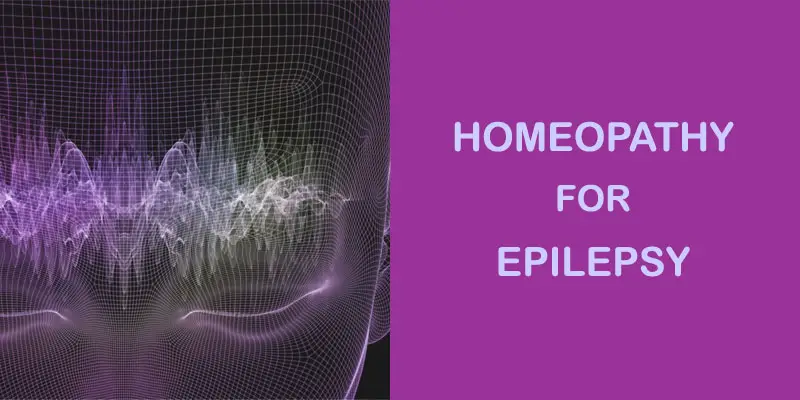
 utter prostration.
utter prostration.
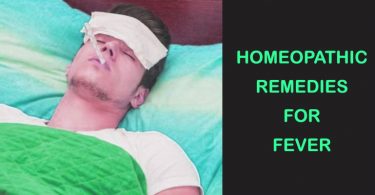
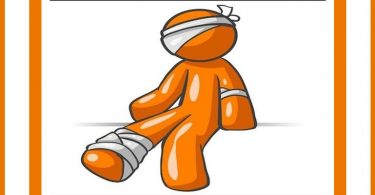
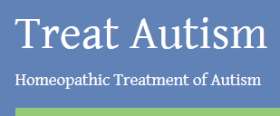

Hello
I am ethar from beirut lenanon
Mother of a 1 year old boy who is been having seizers since his 8th month.
He was diagnosed as West syndrome.
Please advice and help.
And if there is any homeopathic clinic in Lebanon.
What shall I do?
Please help
Hope you are doing good, I saw your contact on web and would like to share our situation with you. Please see if you can suggest us on this:
Baby
DOB : 14-JAN-2012
Birth Type : Cesarean
Situation at birth : Cried normally and everything was normal
Post 5 days: Baby started crying heavily, 6th day we observed some kind of attack eyes rolled upwards and then after few seconds suddenly she was normal. We were clueless and ran to doctor multiple times not knowing we are going to face in future. After few days she again got an attack, this time we felt like we lost the baby. But, we were lucky enough to get her the medication done at the earliest. After one month of treatment, she was discharged from hospital. Things were still normal to this point.
After 9 months, though she completed all the milestones, we observed she is not willing to speak and see. We again ran after the doctors in PGI – Lucknow, Fatima Hospital Lucknow, PnK Clinic – Lucknow followed by lot number of tests. None of them revealed what our baby was going through. During this period, she also started getting fits wherein she used to lean forward for some time. Initially frequency of these fits was too low, but gradually frequency increased and duration also increased.
Then we took her to Chandigarh – PGI, they confirmed she is having Brain Damage and is suffering from West Syndrome/Epilepsy (not confirmed by them but it was any of the two). She was being treated with medicines like ACTH, Valpex, Valperine etc. but none helped. Then finally doctor suggested for Ketogenic diet. We consulted the dietician and started feeding her only Ketogenic diet. Fits went off, but after 4 – 5 days, baby stopped eating food and was cying like hell all the time. We got in touch with doctor, but none helped. Finally we took a call to stop Ketogenic diet as we thought atleast baby will be alive than loosing her.
Then we went back to Noor Manjil – Lucknow, where we met Psychiatrist for babies. He suggested, too many delta waves are generating in brain. Ohhh, BTW till this time after stopping Ketogenic diet, fits started coming up again and new kind of seizures/pain started which repeated itself after around 10 days and will last for around 5 – 7 days. During this period, baby will keep on crying day & night and we were left with no other option than to see all this happening. So, then doctor suggested us medicines like Valance Solution, Residone, Levera etc. Post this, fits and crying after 10 days continued, but baby was more comfortable than before.
While this medication was going on, we thought of admitting her to special child school in Chandigarh – RIMS. There as part of the process, we had to consult a psychiatrist, doctor said get away from Residone and start giving her Cloba – 5mg. We gave these to her for around 2 weeks and yes we also started with Ayurveda medicines in the meantime, that eradicated the daily fits. But, we were waiting for crying period and to see the effect. After 2 weeks she again started crying but this time too heavily, even we who are habitual of seeing all these things now got scared. We stopped cloba and started giving Residone again, but this time that crying period is not getting over.
We are not sure and totally confused, what is happening and who can help us out here.
Please provide pointers, if you can help.
Thanks & Regards,
Puneet
Dear punit. go on
You tube
/rajiv dixit/
epilepsy ya mirgi ka permanent treatment by Ayurveda …
test only one time ..
Beacause. Iss medicine se kewal 3 ya 4 mahino me aaraam mil sakta hai ..
Doctor I am from Punjab,india
Doctor I am sufferingfering from epilepsy problem from around 8-9 years. I am 24 Years old. now I am not weak but after birth I was very weak and ill.
I covered very much in fever from birth .
Now doctor always suggests and ignore me but I am suffering from.
In 8-9 years I have only 4-5 massive attacks . My main problem is when my medicines stop. Please help me….